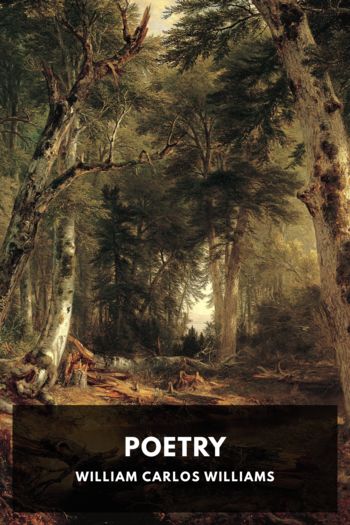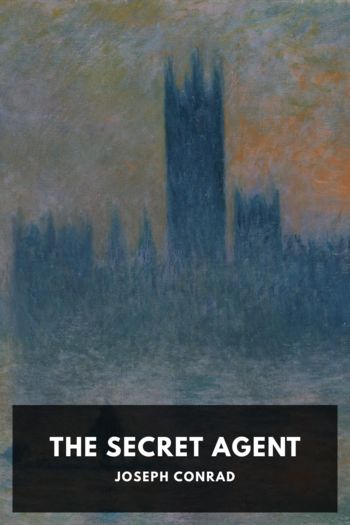Hidden History: Lost Civilizations, Secret Knowledge, and Ancient Mysteries, Brian Haughton [books you need to read .TXT] 📗

- Author: Brian Haughton
Book online «Hidden History: Lost Civilizations, Secret Knowledge, and Ancient Mysteries, Brian Haughton [books you need to read .TXT] 📗». Author Brian Haughton
The Mayan Calendar
Drawing of the back of Stela C, from the archaelogical site of Tres Zapotes. This stone shows the oldest Mayan-style long-count date yet unearthed, equivalent to September 3, 32 B.C. in our present-day calendar.
The Maya were a remarkably sophisticated Meso-American civilization whose territory included present day Guatemala, Belize, Honduras, El Salvador, and the southeastern Mexican states of Tabasco, Yucatan, and Quintana Roo. The six centuries from about A.D. 250 to 900 was the Classic period of Mayan culture, when their
artistic and intellectual achievements were the equal of any pre-Columbian civilization in the Americas. The Maya were the first people of the Americas to keep historical records, most of which adorned stelae (stone monuments), and contain records of civil events and Mayan calendric and astronomical knowledge. Perhaps the supreme example of the Mayan's cultural accomplishments is their extraordinarily intricate calendar system, which had a major influence on the later Aztec calendar. This calendar has become ominously significant in the early 21st century as, according to one reading of its dates, on the winter solstice (around the 21st of December) in 2012, there will be a catastrophic flood and the world will be destroyed.
Calendars are generally based on astronomical events, such as the cycles of the sun, moon, planets, and stars. Ancient civilizations depended on the perceived movement of these bodies across the sky to establish their seasons, months, and years, with priestastronomers pronouncing the advent of a new period. Such calendars were, and still are, used to organize farming, hunting, and migrating activities, as well as to determine dates for religious and public events. One of the first cultures to create a calendar were the Sumerians, who inhabited southern Mesopotamia around 5,000 years ago. The Sumerian calendar, later
inherited by the Babylonians, divided the year into 30-day months, separated the day into 12 periods (each one equivalent to two hours), and split these periods into 30 parts (each equal to four minutes).
Photograph by Ancheta Wis. (Creative Commons Attribution-ShareAlike License v. 2.5).
Aztec Stone of the Sun replica in El Paso, Texas. The stone, based in part on the Mayan Calednar, represents how the Aztecs measured days, months, and cosmic cycles.
The original Egyptian calendar seems to have been derived from the cycles of the moon, but was later replaced when the Egyptians noticed that the Dog Star (Sirius, in the constellation Canis Major), rose with the sun every 365 days, preceding the annual flooding of the Nile by a few days. Based on the knowledge of the heliacal rising of Sirius, they instituted a 365 day calendar that seems to have begun in 4236 B.C., possibly the first recorded date in history. The Egyptian year consisted of 12 months of 30 days each, as well as five additional days at the end of the year. Their months were divided into three periods or weeks, of 10 days each. The Julian calendar, a solar calendar established in 46 B.C. by Julius Caesar, contained a regular year of 365 days divided into 12 months, with a leap day added to February every four years. This was the standard European calendar until the more accurate Gregorian calendar was established in 1582.
The calendars of pre-Columbian America, including those of the Maya and the Aztecs, shared many basic characteristics, such as a 260-day ritual year. The Mayan calendar, the center of their life and culture, was based not only on the sun and moon, but also the cycles of the planet Venus and the constellation of the Pleiades. In fact, what we know as the Mayan calendar is a series of three different calendar systems used in parallel, the most ancient and most important of which was the Tzolkin (sacred calendar). There was also the Haab (a solar agrarian/civil calendar) and the Long Count system. The Tzolkin, or Sacred Year, was a religious calendar used to name children, predict the future, and decide on favorable dates for such things as battles and marriages. The Tzolkin consisted of a 260-day short year (13 months of 20 days), each day of the month having a name, similar to our days of the week, and its own symbol. The Maya day names were Imix, Ik, Akbal, Kan, Chicchan, Cimi, Manik, Lamat, Muluc, Oc, Chuen, Eb, Ben, Ix, Men, Cib, Caban, Eiznab, Cauac, and Ahau. Each of these names was symbolized by a god who carries time across the sky, thus indicating the journey of night and day. This Tzolkin short year system seems to have been taken over by the Mayans from the Zapotec civilization, a native culture of south central Mexico dating back to at least 1500 B.C., and who began to record information in this form around 600 B.C. The Tzolkin is based on the cycles of the Pleiades star clus
ter, a significant constellation for the Maya, who used pyramids and observatories to track their movement. Indeed, the pyramid and temple complex of Teotihuacan, near Mexico City, is oriented to the position where the Pleiades set along the horizon. The Maya later combined the Tzolkin with a lunar calendar known as the Tun-Uc, which used 28 day cycles that reflect the women's moon cycle.
The Haab or Vague Year (called vague because it was a quarter of a day short of the solar year), was a solar calendar in some ways similar to our own, and was connected primarily with agriculture and the seasons. During the Classic Maya period, the days of the Haab were numbered from zero to 19, and the first day of the year related to zero. In fact, the Maya invented the concept of the number zero. Their counting system was based on the number 20, instead of





Comments (0)